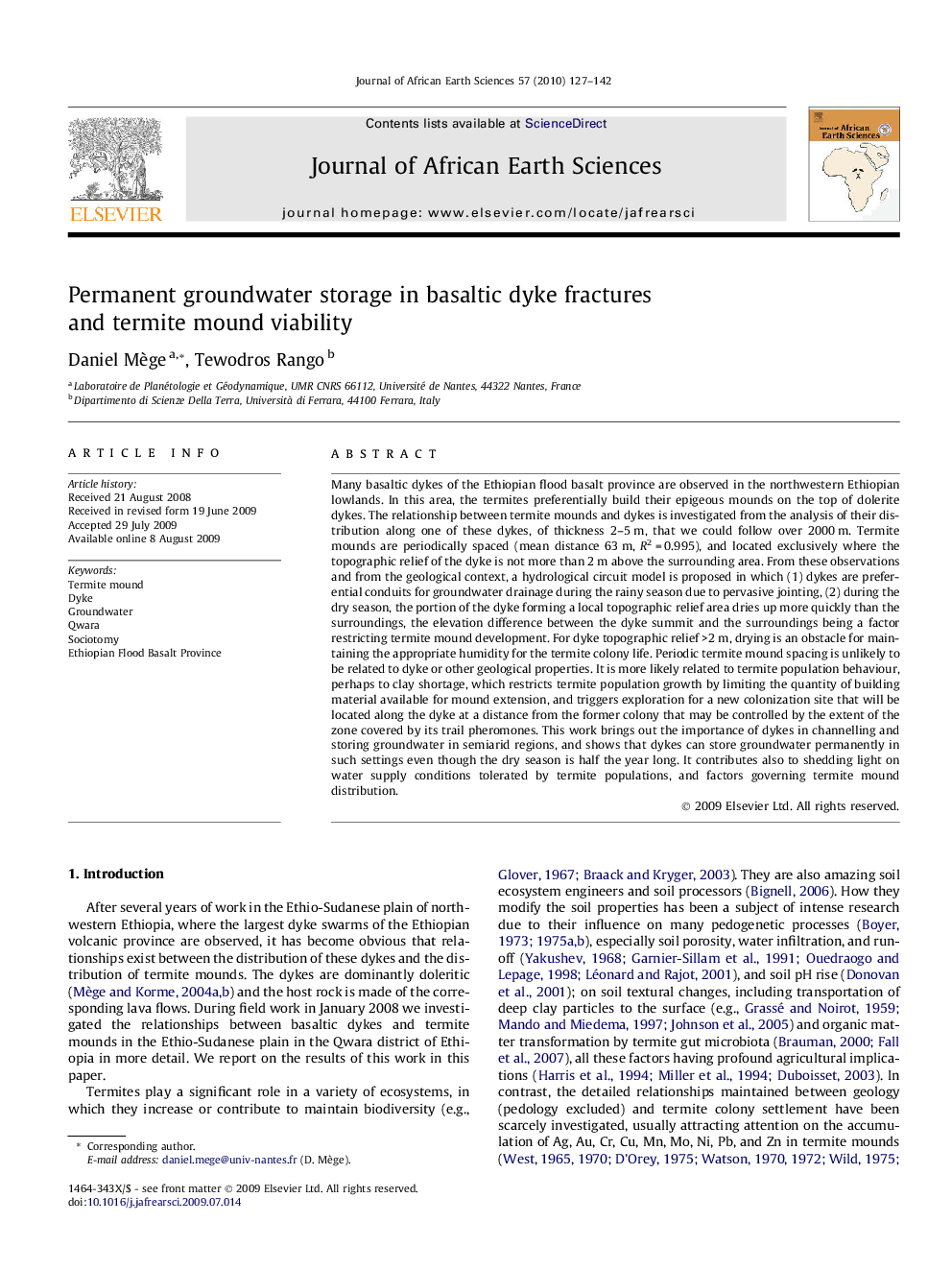| کد مقاله | کد نشریه | سال انتشار | مقاله انگلیسی | نسخه تمام متن |
|---|---|---|---|---|
| 4729532 | 1640245 | 2010 | 16 صفحه PDF | دانلود رایگان |

Many basaltic dykes of the Ethiopian flood basalt province are observed in the northwestern Ethiopian lowlands. In this area, the termites preferentially build their epigeous mounds on the top of dolerite dykes. The relationship between termite mounds and dykes is investigated from the analysis of their distribution along one of these dykes, of thickness 2–5 m, that we could follow over 2000 m. Termite mounds are periodically spaced (mean distance 63 m, R2 = 0.995), and located exclusively where the topographic relief of the dyke is not more than 2 m above the surrounding area. From these observations and from the geological context, a hydrological circuit model is proposed in which (1) dykes are preferential conduits for groundwater drainage during the rainy season due to pervasive jointing, (2) during the dry season, the portion of the dyke forming a local topographic relief area dries up more quickly than the surroundings, the elevation difference between the dyke summit and the surroundings being a factor restricting termite mound development. For dyke topographic relief >2 m, drying is an obstacle for maintaining the appropriate humidity for the termite colony life. Periodic termite mound spacing is unlikely to be related to dyke or other geological properties. It is more likely related to termite population behaviour, perhaps to clay shortage, which restricts termite population growth by limiting the quantity of building material available for mound extension, and triggers exploration for a new colonization site that will be located along the dyke at a distance from the former colony that may be controlled by the extent of the zone covered by its trail pheromones. This work brings out the importance of dykes in channelling and storing groundwater in semiarid regions, and shows that dykes can store groundwater permanently in such settings even though the dry season is half the year long. It contributes also to shedding light on water supply conditions tolerated by termite populations, and factors governing termite mound distribution.
Journal: Journal of African Earth Sciences - Volume 57, Issues 1–2, April 2010, Pages 127–142